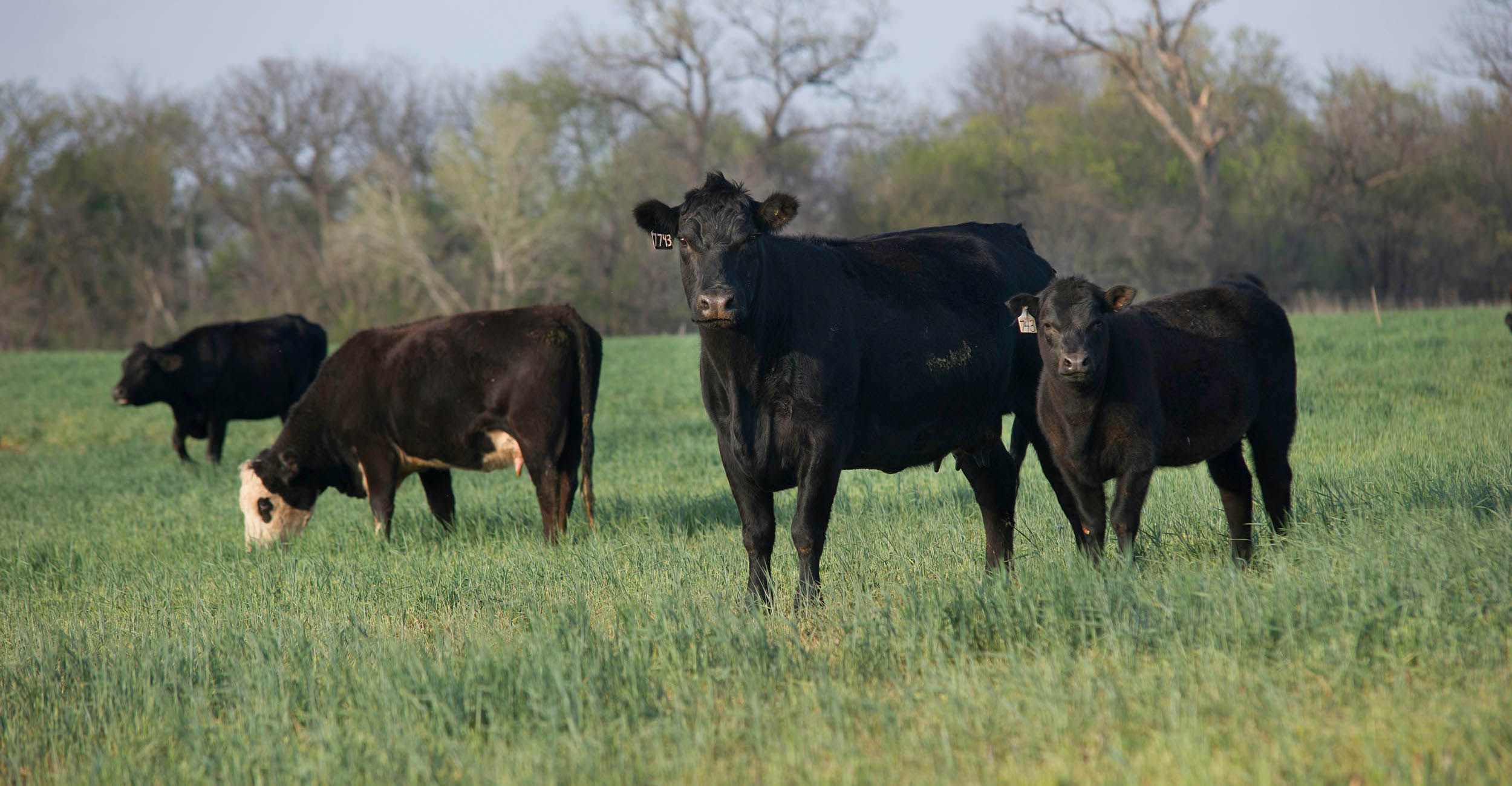
Biosecurity survey to benefit cow-calf production
Friday, January 7, 2022
Media Contact: Alisa Boswell-Gore | Ag Research Communications Coordinator | 405-744-7115 | alisa.gore@okstate.edu
A survey to be administered by Oklahoma State University researchers has the potential to improve production within the cow-calf industry.
In a joint effort with the United States Department of Agriculture’s Animal and Plant Health Inspection Service, OSU faculty and Extension specialists will distribute a survey to learn about the biosecurity practices of cow-calf producers. The survey, funded by a $128,375 National Animal Disease Preparedness and Response Program grant, is currently under review by the USDA-National Agricultural Statistics Service (NASS).
“Biosecurity is anything we do to prevent viruses, parasites and other microorganisms that negatively affect livestock health in an operation,” said Amy Hagerman, Extension agricultural and food policy specialist. “It can be simple practices like washing out your trailer after you take cattle to the fairgrounds or putting a lock on your gate so people can’t just come in, or it can be more complicated practices like quarantining animals in a separate area when they are sick.”
Hagerman said there are many disease threats to cow-calf producers, those common to the U.S. and foreign diseases.
“Biosecurity practices reduce the damage that can be done to your operation by bringing on a disease,” she said. “I think there is recognition of the vulnerability of the beef supply chain when a disruption happens at any given point, and an animal disease incident is one of those disruptions that can happen.”
Biosecurity is good animal well-being at its most basic level, according to beef cattle Extension specialist Rosslyn Biggs, DVM, who said the purpose of the survey is to learn how much cow-calf producers know about biosecurity and to learn why some biosecurity practices are more widely adopted than others. The survey asks producers questions about their individual biosecurity practices and why they do or do not use certain practices and if they have a biosecurity plan, among other questions.
“The hope is this will inform us from an Extension perspective – how do we educate producers on biosecurity activities that are readily implementable and what is the cost associated with those activities combined with what’s the risk of disease entering their herd?” Hagerman said. “It creates this opportunity to learn more about willingness and barriers to biosecurity adoption at the farm level right now.”
Kellie Raper, OSU Extension livestock marketing specialist, and Barry Whitworth, DVM, area food and animal quality health specialist, will also take part in the research.
Hagerman said it is important that producers respond to the survey, because the information from it will be used to create a biosecurity outreach and education program for cow-calf producers and to index biosecurity practices by adoption rate, cost effectiveness and applicability to cow-calf operations. Researchers will distribute the survey this month, and producers who don’t receive one but would like to participate, can contact Hagerman or Biggs.
Hagerman and Biggs said the overarching goal is to design biosecurity program resources that can be easily adapted to other regional cattle producing areas to expand awareness and implementation among cow-calf producers.
“The bottom line is disease costs producers money,” Biggs said. “We want to be able to educate producers on the things that they can implement on farm right now. There is cost associated with some of these biosecurity practices, but ultimately, a healthier herd is a more profitable herd.”
Inquiries about the survey can be sent to amy.hagerman@okstate.edu or rosslyn.biggs@okstate.edu.
